What is a Chromebook and should you buy one?
Our advice on whether to ditch Windows and macOS to buy a Chromebook
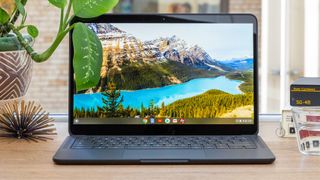
Whenever I visit family and friends, the one question I expect to come up is: "What is a Chromebook?" It's a query I get a lot more now that Chromebooks have gone mainstream — giving people capable budget options at well below $500. So, what is a Chromebook? Instead of a Windows 10 (and soon Windows 11) or macOS laptop, Chromebooks run Google's Chrome OS.
Originally seen as a platform built around Google's cloud apps (Chrome, Gmail, etc), Chrome OS has done well in the education market. Over time, however, the appeal for Chromebooks has widened, and the best Chromebooks are some of the best laptops overall today. In fact, the demand for these Chrome OS laptops spiked over the past two years that Chromebooks outsold MacBooks in 2020 (according to the IDC via Geekwire).
- Check out the best 2-in-1 laptops
- Best college laptops for students
- How to check your Chromebook's battery health
If you're considering buying one for your kid, our Chromebook drop test gives us a sense of which Chrome OS laptop is the most durable. Students should also check out our Windows 10 vs. macOS vs. Chrome OS guide when the back-to-school season comes around.
Below is a comprehensive guide for anyone who is considering buying a Chromebook. We've put our collective knowledge together to look at pricing, features, and comparisons with other laptops, including MacBooks and top Windows 10 laptops, to see if a Chromebook is best for you.

How much do Chromebooks cost?
Why you can trust Laptop Mag
For the longest time, there was a pretty narrow price range for Chromebooks, and it was on the more affordable end of the spectrum. That is still largely the case; You can pick up the affordable and lightweight Samsung Chromebook 4 — which has an 11.6-inch HD display, an Intel Celeron N3000N CPU and 4GB of RAM — for only $229. For a bit more than that, Lenovo offers the excellent $279 Chromebook Duet.
Other models ask you to go into the mid-range price bracket, such as Google's Pixelbook Go ($649), the business-friendly Lenovo Yoga C13 Yoga, or the $549 Samsung Chromebook Pro, a stylus-equipped 12.3-inch notebook with a 2400 x 1600-pixel display, an Intel Core M3 processor and 4GB of RAM. Now the premium Chromebook market is growing, with laptops like the Samsung Galaxy Chromebook ($999) and its successor, the Samsung Galaxy Chromebook 2, leading the charge.
You'll probably wind up paying more for a Windows 10 notebook, as the average selling price for a PC is $478, according to NPD. There are more affordable options, as we've detailed here, but the PC laptop market has a much higher cap than the Chromebook market.
But is a Chromebook right for you? Our Chromebook buying guide has the answers to these and other questions.
| Row 0 - Cell 0 | Chromebook | Price |
| Best Overall | Asus Chromebook Flip C434 | $569 |
| Value Pick | Lenovo Chromebook Duet | $249 |
| Best for School | Acer Chromebook Spin 713 | $529 |
| Best for Business | Google Pixelbook Go | $649 |
Chromebooks run Chrome OS, Google's operating system, so they heavily feature Google's suite of applications (Chrome, Google Docs, Google Sheets, etc) and need a working Internet connection to get the most out of them. Although you can log in to Chrome OS as a guest, we recommend you sign in to the system with a Google account to have the best experience.
Chromebook apps: Can I use Android apps?
These machines were primarily optimized for Google apps, such as Gmail, Google Calendar and Google Drive, however, every modern Chromebook now has access to the Play Store. This deep integration can be either positive or negative, depending on how you use a PC. Chromebooks will be easy to set up if you already use those apps. And if you need help using incognito windows, we have a guide for that too.
Android apps are available on all new Chromebooks. This gives Chromebooks access to more games, productivity options and other apps to make these machines more versatile, though the apps seemingly run via an emulator with mixed results. Also, not all apps are optimized for a larger screen (they were built for mobile-first), so you might encounter some scaling issues. Check out our guide to the best Chromebook games for specific gaming app recommendations.
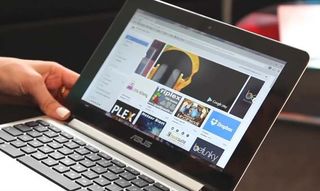
It may be best to stick with the Office Android apps or Office Online if you're bringing a lot of files over to your Chromebook. There are often formatting issues when importing third-party documents into Drive. Fortunately, Google Drive allows you to save documents to Microsoft formats, so you'll still be able to share files with non-Chromebook users through Microsoft Word or other programs.
On the other hand, there are a handful of photo editors available for Chrome OS, including Pixlr (free) and Photopea, which look a lot like Photoshop but without the advanced tools. But those with existing files are out of luck — there is no Chromebook app that can edit Adobe's .PSD files.
If you're familiar with Linux's applications, you've got some options. Chromebooks will support Linux programs right out of the box, satisfying demand from some of the more tech-savvy Chromebook owners. The Pixelbook was the first that will get this option, and others followed.
How are Chromebooks for offline use?
Chromebooks are designed to rely heavily on the Internet, which means that many apps simply won't work if you're out of Wi-Fi range. There are more than 200 offline Chrome apps that can work without Internet connectivity, including Gmail, Pocket and Google Drive, and tons of the Android apps will also work offline.
Chromebook games
The Chrome Web Store offers casual titles such as Bejeweled and Cut the Rope, but you won't have the same selection as you would on a Windows machine or a Mac. Fortunately, Chromebooks with Android support get more modern titles such as Fallout Shelter, Star Wars: Galaxy of Heroes and Minecraft, so be sure to check out our best Chromebook games roundup for some of the top titles out there.
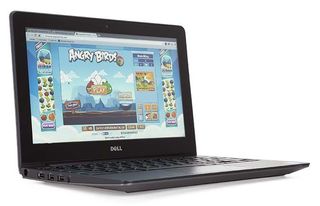
Chromebooks generally have limited graphics processing power, so you'll want to stick to less demanding titles. However, Google's Stadia platform can stream AAA games like Assassin's Creed and Doom to any device with a Chrome browser, which makes Chromebooks much more formidable gaming machines.
Chromebook special features
Google Assistant landed on the Chrome OS platform in the Pixelbook. While you can activate it with the Pixelbook Pen, that $99 accessory isn't necessary when you have the dedicated Assistant key in that laptop's keyboard. While the launcher is currently integrated with Google Now, giving you info cards for the current weather and local news stories, we could see it switching to Google Feed.
Google redesigned the on-screen keyboard for touch-screen use, making it easier to use on 2-in-1s like the Asus Chromebook Flip C436. With a minimalist design, the on-screen keyboard recognizes your scribbles and gives you choices of text to input. When we tested that feature, it was always accurate in recognizing our writing.
Google debuted a new webpage dedicated to new Chrome OS feature announcements, entitled "What's new with your Chromebook."
Chromebook battery life
Chromebooks typically offer exceptional battery life, but not every model. Of the Chromebooks we've reviewed in the past year, we've seen an average of 9 hours and 15 minutes of endurance on the Laptop Mag Battery Test, which involves continuous Web surfing over Wi-Fi.
On the top end, you'll notice standouts like the Acer Chromebook R 13's runtime of 11:00. Google's own Pixelbook, disappointingly, offers a relatively short 7 hours and 43 minutes of juice. Then again, the Pixelbook Go, an arguably better value than the more premium Pixelbook, lasted an excellent 11 hours and 29 minutes.
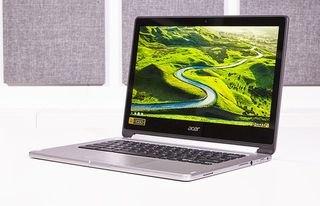
We recommend shooting for at least 9 hours of juice, which half of the Chromebooks we've reviewed offer. While some affordable Windows 10 notebooks offer amazing battery life, the ultraportable notebook average is a shorter 8 hours and 56 minutes.
Are Chromebooks durable?
Similar to business notebooks made to survive drops and other minor disasters, Chromebooks are built to withstand falls, scrapes and similar punishment.
We put the durability of top Chromebooks to the test by dropping 11 different models from heights of 2.5 feet and 4 feet then scoring them on a scale of 0 to 10 based on how much damage was sustained. You can read our full report here.
Separately, the Acer Chromebook 14 proved durable, surviving unscratched and fully functional after our Dropbot 5000 test bench dropped it from a height of 48 inches onto a plywood plank.
The Latitude 5400 Chromebook Enterprise and the Acer Chromebook 14 for Work are MIL-STD-810G certified, meaning they're capable of passing durability testing that U.S. Military equipment must pass.
Durable Chromebooks aren't just for adults. The kid-friendly Acer Chromebook 11 N7 C731T survived a full glass of water getting spilled onto its keyboard, as well as the 48-inch high drops from our Dropbot 5000. It may have gotten scuffed along the way, but it's a good option for clumsier users.
Chromebooks for business
Laptops with Chrome Enterprise offer tools that IT administrators need to manage laptops in and out of the office.
The Dell Latitude 5300 2-in-1 Chromebook Enterprise, HP Pro C640 Chrome Enterprise and Lenovo ThinkPad C13 Yoga are among the first true business Chromebooks with a full suite of security features, including a Trusted Platform Module (TPM), a security chip that helps keep malicious attackers away from your passwords.
What size screen does my Chromebook need?
Most Chromebooks fall between 11 and 13 inches. That means you won't have trouble choosing a smaller model, such as the 11-inch Acer Chromebook 11 N7 , the 12.5-inch Asus Chromebook Flip C302CA and the 13-inch ThinkPad 13 Chromebook.
These models often weigh less than 3 pounds, making them the most portable, and great options for kids. However, the screen size and keyboards may seem cramped for adults.
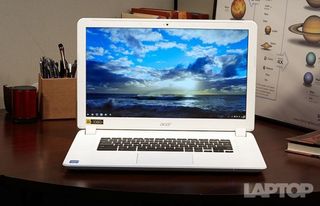
Those looking for more real estate for web surfing, getting work done, watching movies and playing games can pick up the 14-inch Acer Chromebook 14 or the 15-inch Acer Chromebook 15, a few examples of the growing batch of Chromebooks with big screens. Lenovo took it a step further with the Yoga Chromebook C630, a 15.6-inch laptop with a 4K display.
While the demand for larger Chromebooks is increasing, don't look for a 17-inch Chromebook; they simply don't exist yet.
The Acer Chromebook 715 and 714 are 15.6-inch and 14-inch aluminum notebooks with fingerprint readers. The Chromebook 715 also sports a number pad.
What specs do I need?
Because Chromebooks are meant primarily for online use, the specs aren't as important as they are for Windows laptops, but you'll still want to know how much power and storage you're getting for your money. Here's a quick guide.
RAM
When it comes to RAM, Chromebooks come with either 2GB or 4GB. While models with 4GB are more expensive, we've found that difference to be worth it for multi-tasking.
MORE: How Much RAM Do You Really Need?
Both the HP Chromebook 14 (4GB RAM) and the Lenovo 100S Chromebook (2GB RAM) featured the same Celeron N2840 processors, but the HP notebook handled more than a dozen open tabs without a problem while the Lenovo stuttered with 10 open Chrome tabs and Spotify playing. Our tests of the Windows version of the Lenovo Ideapad 100S ($180) show that similarly spec'd PCs can handle a larger stack of tabs.
If you have a larger budget, we recommend upgrading to a Chromebook with 8GB of RAM or even 16GB. The memory upgrade will ensure your system never slows down.
CPU
The processor in your Chrome OS machine helps determine how smoothly your Chromebook performs, especially when you have multiple tabs open and you're streaming video or playing games.
We find Intel Celeron chips in many Chromebooks, and they often provide acceptable speed. The $229 Acer Chromebook 11 N7 C731T (Celeron N3060, 4GB RAM) for example, could run 8 concurrent Chrome tabs, but stuttered after we opened another.
You can get a Windows 10 laptop with similar specs and price, such as the Dell Inspiron 11 3000 ($229), but it might not be as capable. That machine has the same processor and memory, but while it lasts more than 13 hours, its performance was less than that of the 11 N7.
If that doesn't sound like enough for you, certain Chromebooks pack Intel Core CPUs for even more speed. The biggest downside to these Core M Chromebooks, such as the Asus Chromebook Flip C302CA ($499) and Samsung Chromebook Pro ($549) is their heftier price. Don't worry about that powerful CPU affecting the battery life, as the Samsung Chromebook Pro (Core M3) provided more power and longer longevity (8:05) than its weaker Chromebook Plus (ARM MediaTek; 7:46) sibling.
If you want a Chromebook with enough speed to run your favorite Android apps, consider laptops with Intel 10th Gen or 11th Gen Core i5 and Core i7 CPUs, such as the Pixelbook Go. And don't count out AMD, which recently announced new Ryzen and Athlon 3000 C-series CPUs made specifically for Chromebooks.
If you want a Chromebook without an Intel Chip, there's always 2014's Acer Chromebook 13, the only Chrome OS machine with an Nvidia chip (the Tegra K1). While it offers excellent graphics performance, it doesn't offer a touch screen.
Storage Size
Since Chrome OS is so lightweight, Chromebooks often don't need much storage. Most pack just 32GB of onboard storage, and that's likely all you'll need at this stage. Once Android support lands on the platform, users will find ways to make use of the SD card reader in notebooks such as the Acer Chromebook 14, where you can expand the storage up to 64GB.
Spring for a 32GB model now if you're buying with Android apps in mind. Similarly-priced Windows laptops often include 32GB by default, but that operating system takes up so much space that you're left with a similar amount of free storage as a 16GB Chromebook.
Google gives you 100GB of free Google Drive storage with every Chromebook purchase, though that only lasts for two years, after which you'll only have the standard 15GB of free space.
Screen

The size of the screen isn't the only thing that matters. While we appreciate the bright, color-accurate panel in the$179 Samsung Chromebook 4, its 1366 x 768-pixel dimensions mean it's best for writing and reading. But if you want sharper images, video and graphics, spring for one with a full-HD display (1920 x 1080 pixels), such as the $359 Acer Chromebook R 13.
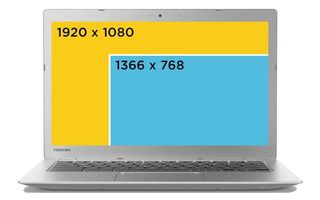
Windows 10 has been built for touch screens, but you can get the same functionality in Chrome OS. You just have to know which one to get — and expect to pay about a $100 premium. While old at this point, the $280 Acer Chromebook R 11 can bend into a tablet, making use of its IPS touch-screen display. The HP Chromebook x2 has a detachable design, meaning you can remove the keyboard like you would on a Microsoft Surface and use the screen as a standalone tablet.

The $487 Asus Chromebook Flip C434 also has a touchscreen and supports Android apps. If the prospect of using What's App, Super Mario Run and other apps on a Chromebook sounds like an option for you, make sure your next Chromebook includes a touchscreen.
The Samsung Galaxy Chromebook offers one of the best displays we've seen in a Chromebook, with a 4K AMOLED panel that covers 224% of the sRGB color gamut and reaches 357 nits of brightness.
Who are Chromebooks for?
Overall, the best way to tell if someone will enjoy owning a Chromebook is if you know they already spend most of their time in the Chrome browser. Those users will take to the notebook naturally.
If you're buying this Chromebook for someone else, you should take a few moments to consider how they're going to use the device. Chromebooks are especially good for younger students, as they are ease to use and are fairly secure. It's also quite easy to update your Chromebook, and even better, these laptops often do that themselves.
Children who are still learning how to use computers may be more receptive to learning how a new operating system works, and while there's no official Minecraft title for Chrome OS, the Android-based Minecraft: Pocket Edition will become available on certain Chromebooks later this year.

Some elder relatives may have never truly understood Windows enough to use their PC frequently, but others who have learned just enough to make do may become frustrated that they need to relearn where downloads go, or that their favorite app is not available for Chrome.
But if your office will support Chrome OS, you might want to look into getting your company to spring for the Dell Latitude 5400 Chromebook, a proper business laptop with great battery life and strong performance.
Bottom Line
Chromebooks are affordable and offer decent performance, and the introduction of Android apps is increasing their capabilities. Microsoft is fighting back with claims that Windows 10 S mode will give laptops better performance and battery life, but if you're looking for a simple way to get online and you prefer Google's services, you can confidently answer the question "Should I Buy a Chromebook?" with a bold "Yes!"
Stay in the know with Laptop Mag
Get our in-depth reviews, helpful tips, great deals, and the biggest news stories delivered to your inbox.
Phillip Tracy is the assistant managing editor at Laptop Mag where he reviews laptops, phones and other gadgets while covering the latest industry news. After graduating with a journalism degree from the University of Texas at Austin, Phillip became a tech reporter at the Daily Dot. There, he wrote reviews for a range of gadgets and covered everything from social media trends to cybersecurity. Prior to that, he wrote for RCR Wireless News covering 5G and IoT. When he's not tinkering with devices, you can find Phillip playing video games, reading, traveling or watching soccer.
Most Popular


